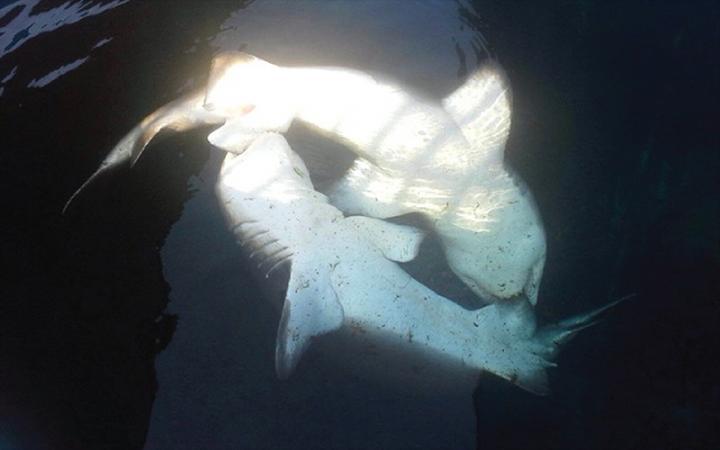
Section Branding
Header Content
Study: Mama Sharks Might Have Much More Agency In Picking Fathers Of Their Pups Than We Thought
Primary Content

Sharks, rays, and skates — all fish in the subclass Elasmobranchii — are a beautifully diverse collection of animals. One big way they differ is in how they reproduce. They lay eggs, like traditional fish, and let them mature in a select corner of the ocean. Or, they might let the eggs hatch inside their bodies. But they can also give live birth to pups gestated like mammals: with an umbilical cord and a placenta in a uterus.
It doesn’t end there. These fish, like many other members of the animal kingdom, have two uteruses. Females are capable of reproducing asexually, without help from a male. As genetic sequencing has advanced, researchers have been finding another curious pattern: Many litters of pups will have more than one father, a phenomenon known as multiple paternity.
Evolutionary ecologists seeking to explain why sharks would use this strategy of multiple paternity have hypothesized it’s one of convenience for females. In species with aggressive and competitive mating practices, like many sharks and rays, it’s possible females find it saves them precious resources to acquiesce to multiple males.
But a researcher at the Georgia Aquarium in Atlanta is challenging these old notions about shark mating behavior. Dr. Kady Lyons is the lead author of a new study about the role female sharks play in choosing fathers for her pups. Lyons told Science Friday that research shows that females might have more agency in choosing mates and producing successful offspring.
“She is investing a ton of energy into producing these babies," Lyons said. "Why would she not have a stake in that? Why wouldn’t she have a say in who’s going to get to fertilize her eggs?”
Lyons said that for hundreds of years, only male voices were heard in science, leading to theories based on limited experiences. She hopes including female perspectives can lead to richer science.

